I can no longer properly feel my fingers, so it’s time to come in from the front porch (I still call it a conservatory). My weather app reckons it feels like -14ºC (6ºF), and it can’t be much warmer as I sit in a draft behind the big panes of single-glazing. But, I’m carving a serving spoon, looking out over snow, with a sliver of view of a frozen lake – so I’m happy. Though, it is time to come inside and post something here.
It’s been a while since I’ve chased anyone for an article here, but I’ve had such fun being an editor that I wanted to publish a few winter-carving tips. Well, I’ve only got one that’s particularly wintry: if you can, carve by an open fire indoors. I can, so shall.
This post started with a bad pun – possibly brought on by the cold shutting off more sensible parts or my mind.
Anyway, the spoon I’ve got right now is from a big log of American sycamore. In the UK, where I’ve learned most about trees and woodcraft, we also have sycamore, but use the name for a different tree. The British sycamore is a maple tree pretending to be a plane tree (acer pseudoplatanus, or false-plane maple). The American variety is a proper plane tree (platanus occidentalis: western plane).
This wood hasn’t been my favourite to carve, but it does have some lovely patterns hidden in it.
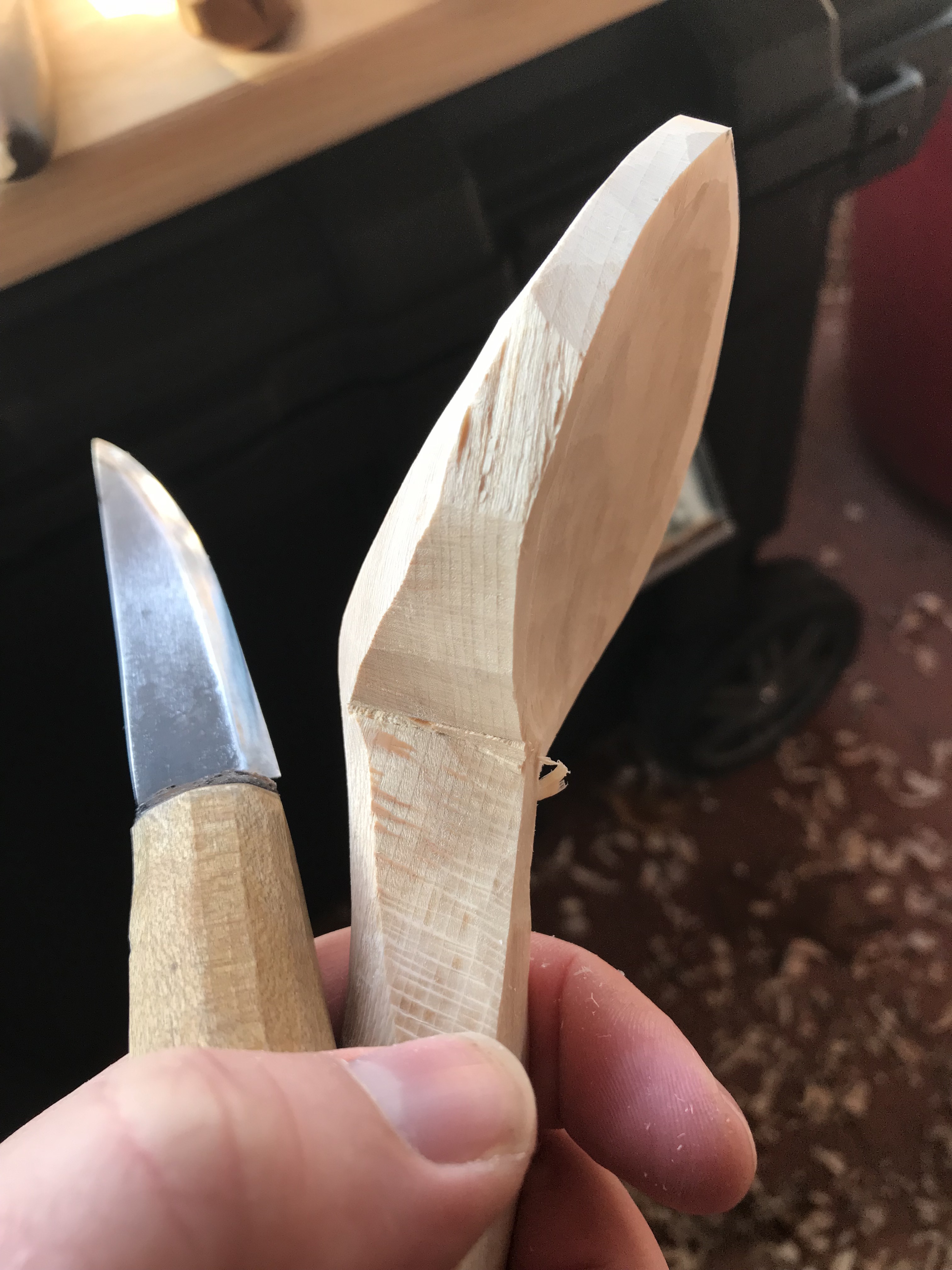
I wanted to check how my bowl is oriented to the handle, after carving broad facets on the back, so I started thinking about all the planes I’ve got to deal with. I do hope you weren’t expecting any better wordplay. I’m sorry, but plain old planes in the plane in my hand is all I’ve got. But, it does lead me onto my first tip – which in danger of being ridiculously obvious. I use the edge of my knife as a winding stick.
Winding sticks are dead-straight tools that exaggerate twist. Cabinetmakers use them to check the plane of a board simply by placing them at either end of their plank and looking down the board to see if the sticks pair up. By looking down the spoon, using my knife as one winding stick, I can see that the handle stands proud on the right side – so I can even out the spoon by taking off either the bit of the handle sticking up on the right, or the bowl from the left side.
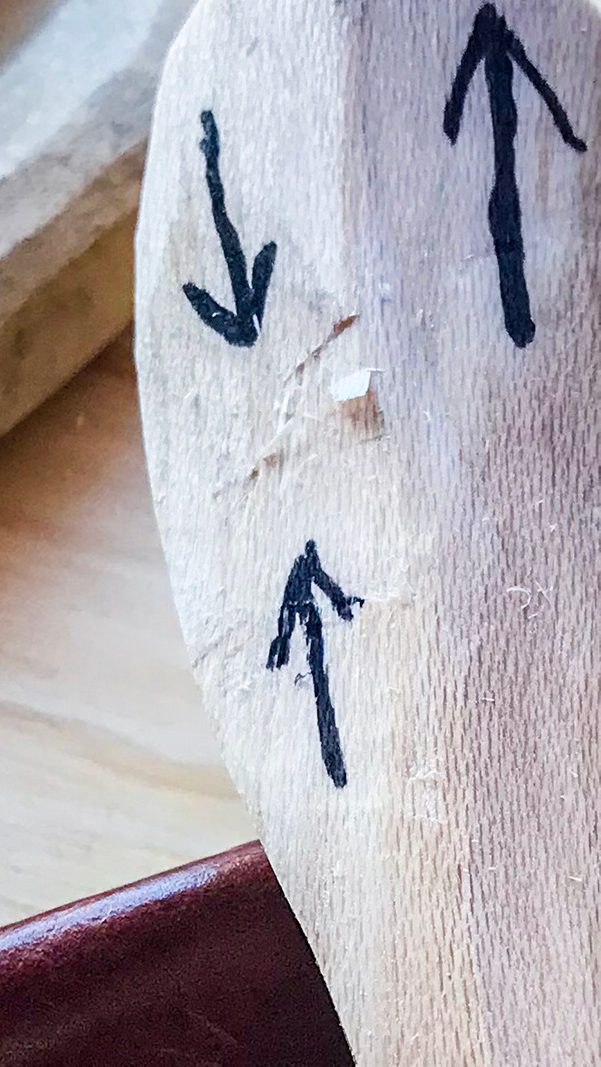
Speaking of planes, this bugger’s quite twisted. The cover image is of arrow I marked with a sharpie, showing the grain direction. Usually, I can find a bit of wood straight enough to let me carve fairly predictably: from higher to lower planes, following the grain direction. This twisted tree, though, grew like a corkscrew. When I split this section off, it tore apart a wooden wedge, both by rotating it like an auger, and cracking it length-wise as it followed the cleft round the bends. This makes for challenging carving, because slicing against the grain tends to lift fibres out and tear them off.
The final bit about planes is in facets. I quite like broad, flat facets on some spoons, particularly on the back of the bowl. This adds lines, and can either exaggerate or play with the seeming shape of an otherwise elliptical bit of wood.
In this case, I want the facets to follow the curving bowl, rather than impose straight lines (which you can also do with carved facets). To get the look right, I start by planting my blade at the highest point of the bowl’s back, near where it joins the handle. This becomes my fulcrum – braced with the thumb of my non-carving hand – and I start to pivot the blade. As the sweeping cut lengthens, following the outline of the bowl, I push it off of its pivot point using that bracing thumb.
I’ve found that it’s easier to start with one of the facets off-centre. Then, you can tidy up the lines by cutting overlapping facets – maybe one down the centre of the bowl’s back, and another along the edge. If you don’t like the look of the lines, you can change them by cutting along any of the planes you’ve created until the shape looks good.
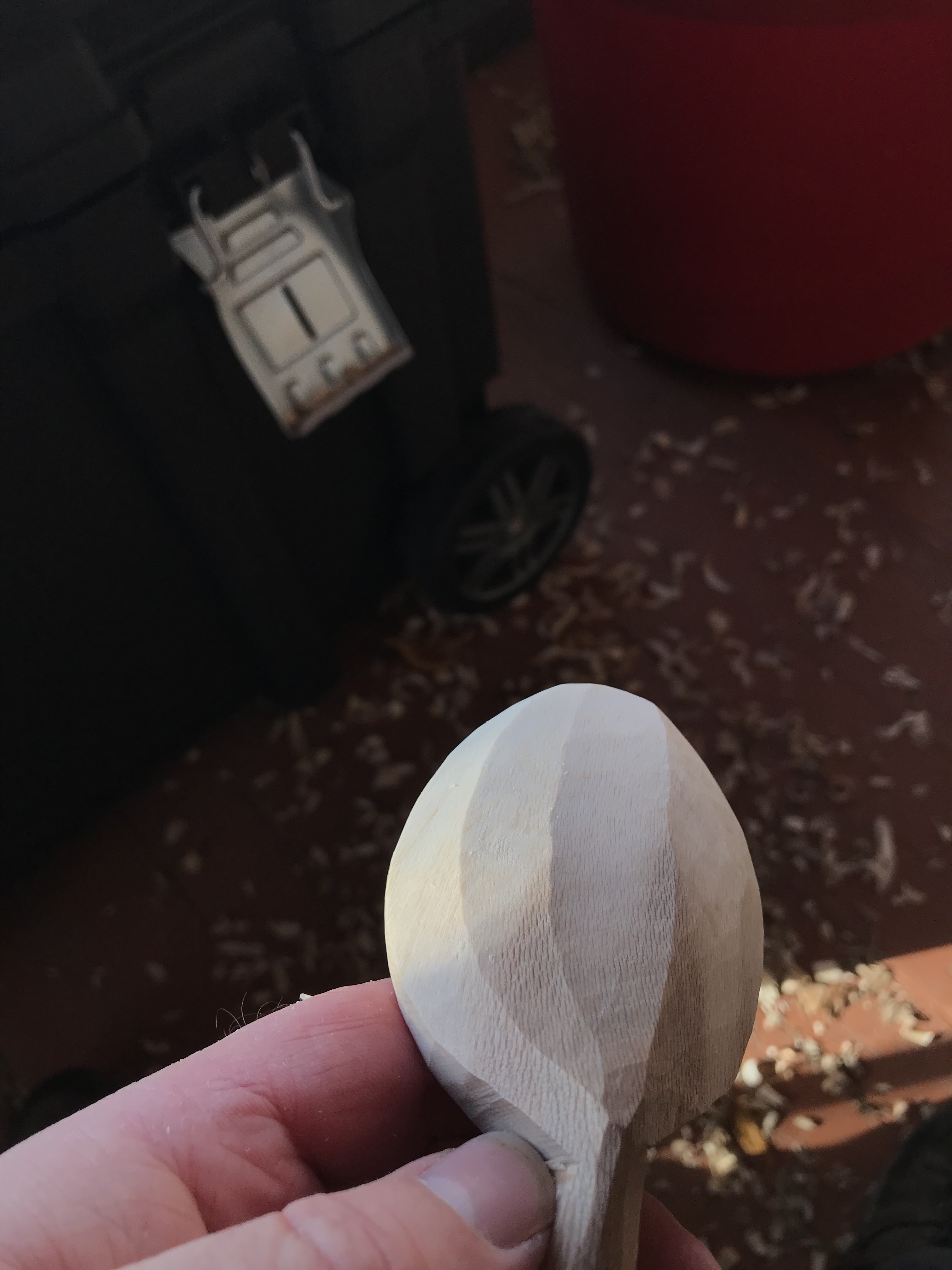
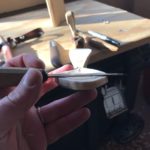
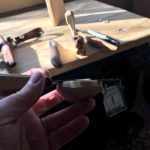
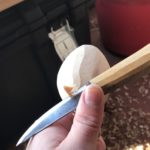
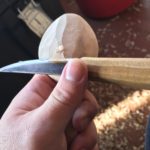
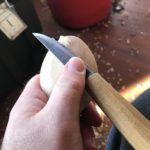
I just happened to see this site and looks to be incredibly interesting. Looking forward to seeing and sharing. I am relatively new to the craft, started back in November 2021. I’m 77 and have worked wood most of my life.